On one of our last evenings in Yunnan, I took a short walk at dusk around the Xiangyangxi Village (向阳溪村) where we were staying on the Erhai Lake of Dali prefecture. As Yunnan is located relatively well west in the single Beijing Standard Time zone of China, the sun wouldn’t set until well past eight o’clock. This made for very leisurely dinners around the communal table of the guest houses we stayed in, allowing time to chat with the owners and our traveling companions as the blue skies tinged violet, then rose, and then were taken over in a dazzling sunset filling the heavens with a multitude of colors.
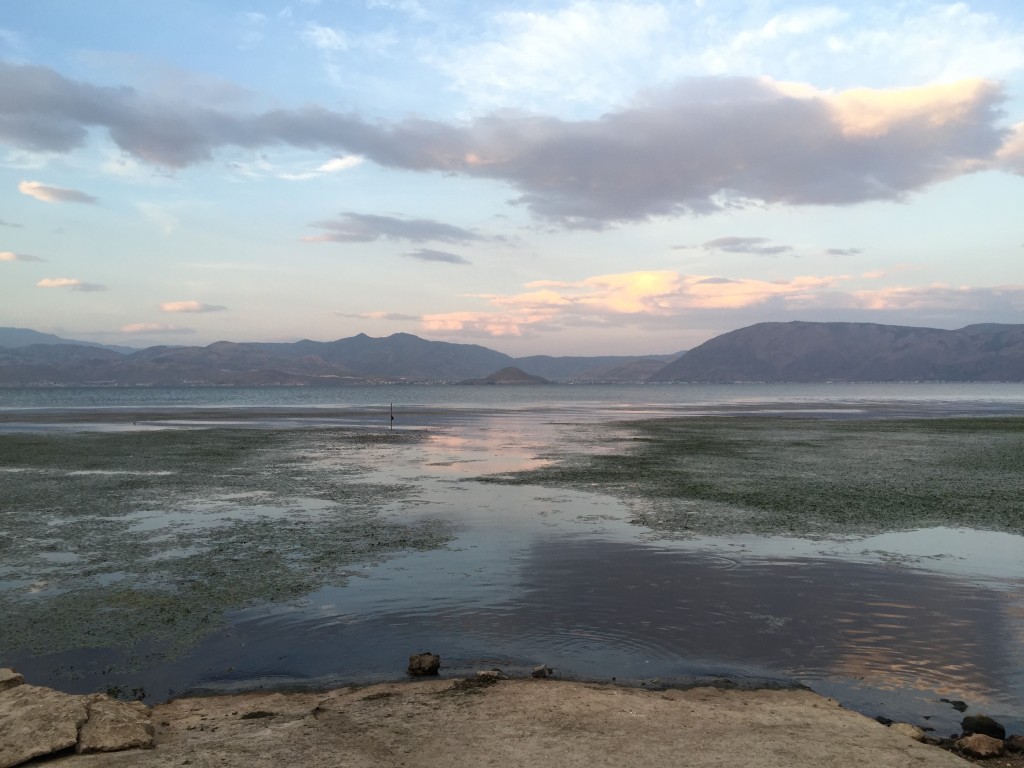
The name of Erhai Lake (洱海) describes it as a sea shaped like an ear (耳), and its north-south elongation makes it look like a Daoist immortal’s drooping earlobes from above. Xiangyangxi Village lies towards the northern tip of the lake, closer to the old Bai market town of Xizhou than to Dali Old Town. Dali prefecture includes the entire region of the lake, with more than a dozen villages circling the famed waters of Erhai.
During the day the lake ring road buzzes with vespas rented by holidaying twenty-somethings. But in the evening, the village streets turn serene again—a few kids goofing off with musical instruments, Bai women in petunia pink kerchiefs chatting on a doorstep, a man finishes his cigarette before returning home. The east gate of Bai homes is traditionally the grandest, decorated with beautiful stenciling and fantastically intricate stone carvings. I admired many of these in the dimming light—blue and ochre paintings against white stucco and grey stone. A temple protruded from the street out into the rice paddies. Since its gates were already locked, I could only admire the wind diverting wall, the 屏风 (pingfeng), an element in feng shui design, across from the main entrance. It was covered in symbols and mythical creatures, some of which I recognized and some of which may only be understood by the Bai people of this very village. Back in the guest house, I watched the last light of the sunset fade to stars behind a tile roof decoration, the clay cat of the Bai house, which absorbs bad energy. A few hours left in Yunnan, to spend between the stars and the quiet lapping of the ink dark lake.
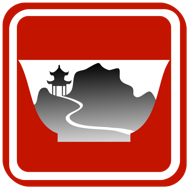
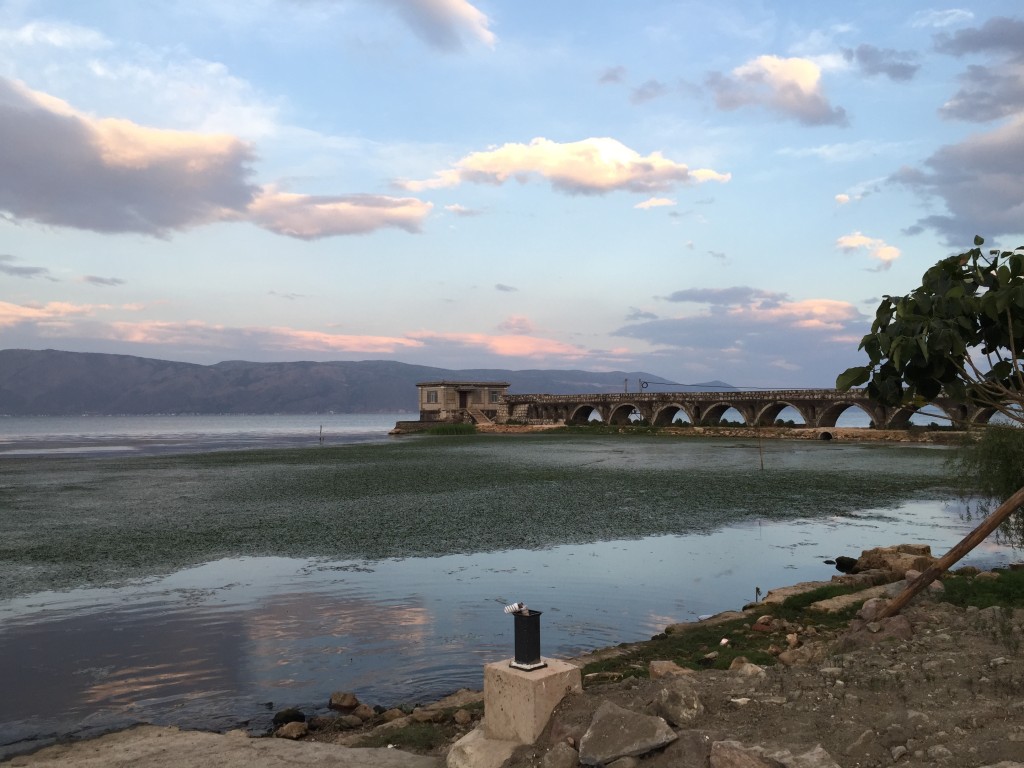
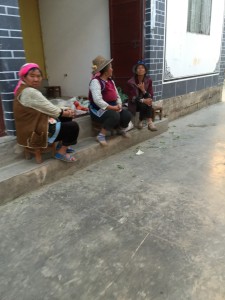
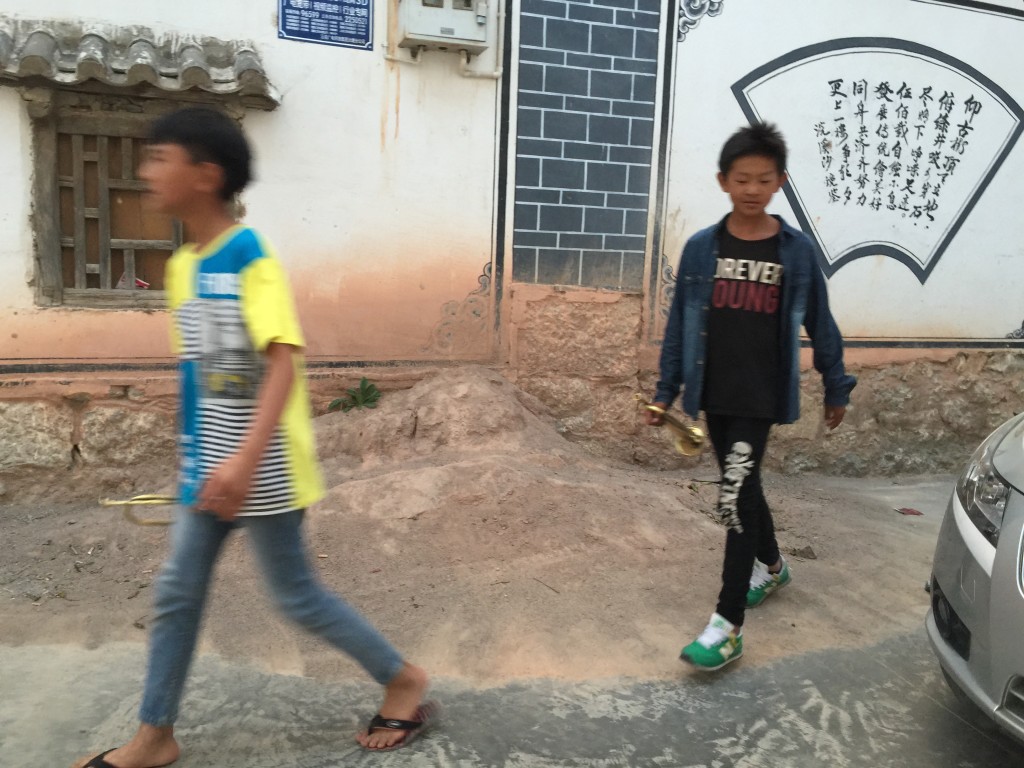
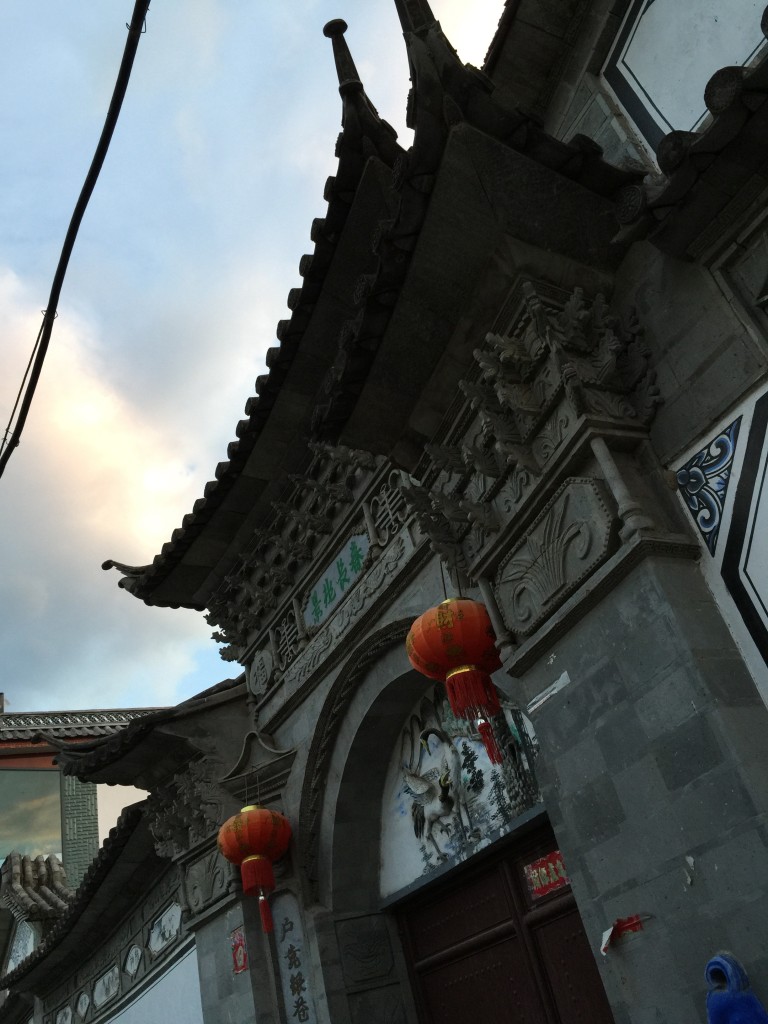
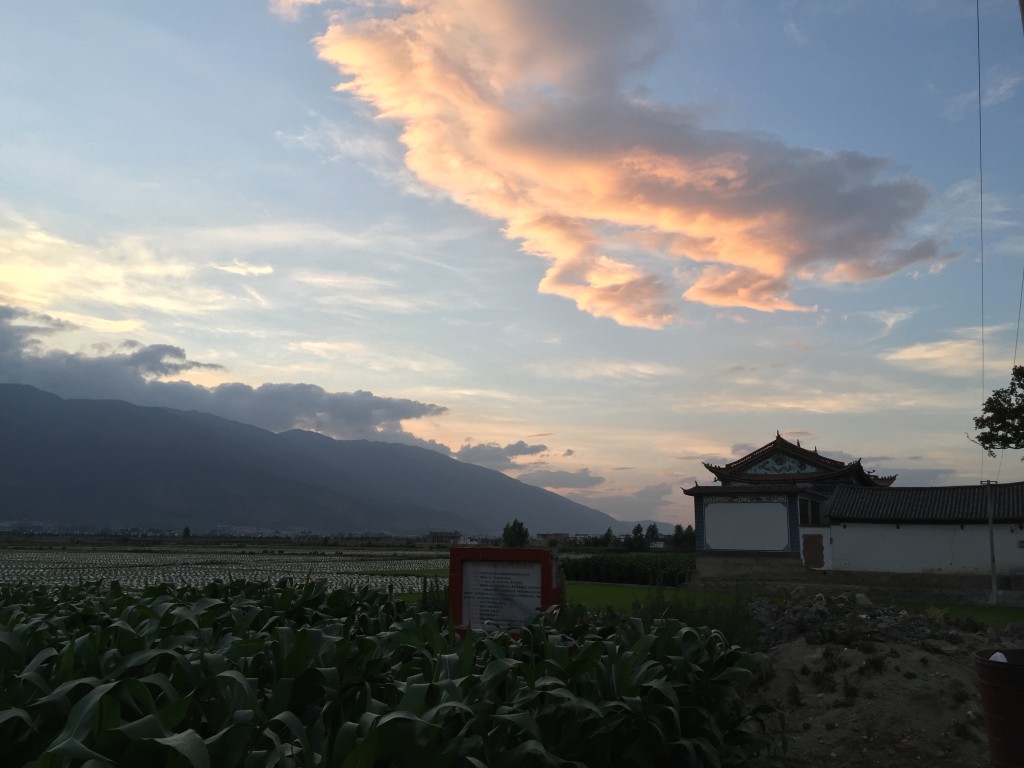
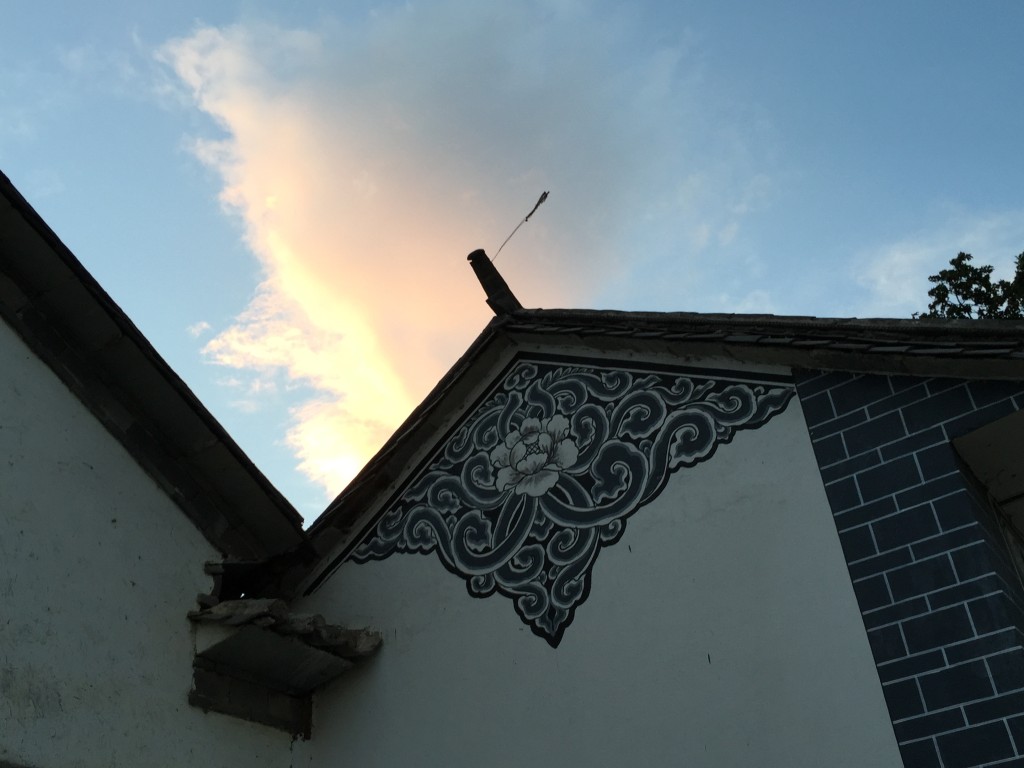
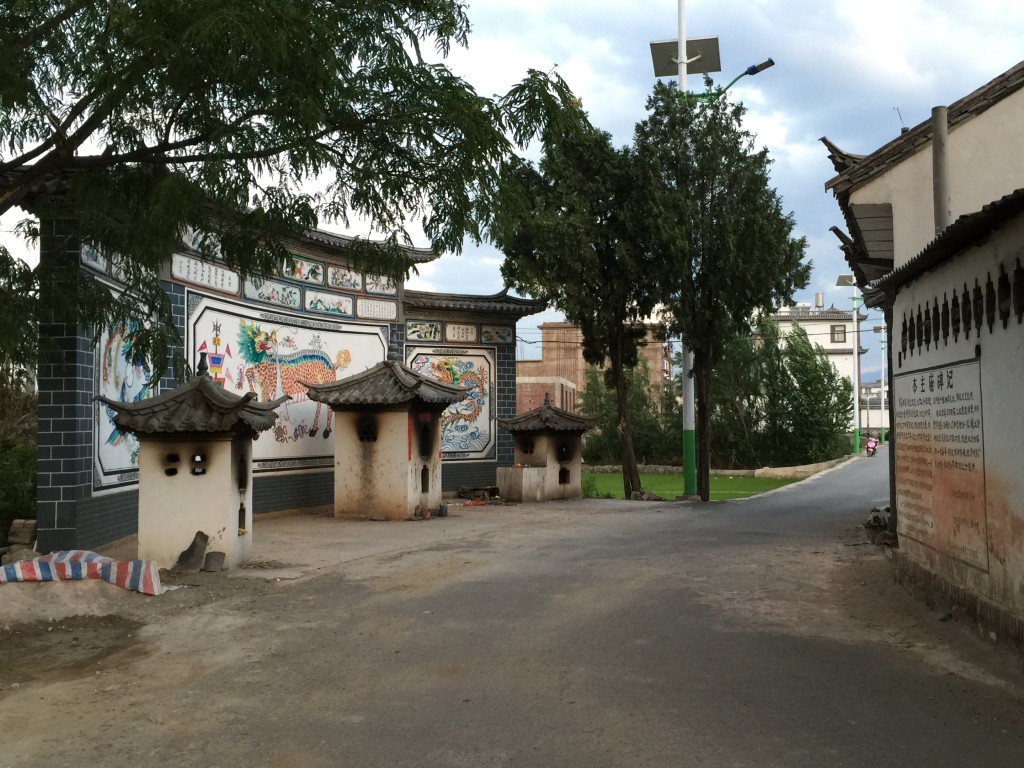
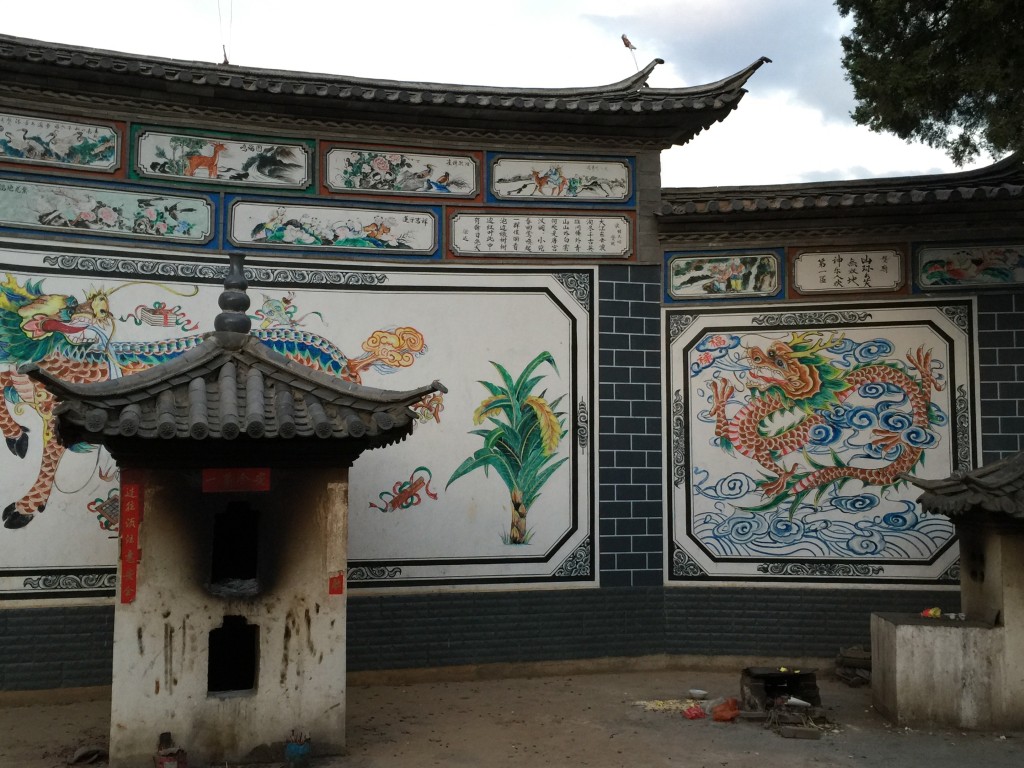
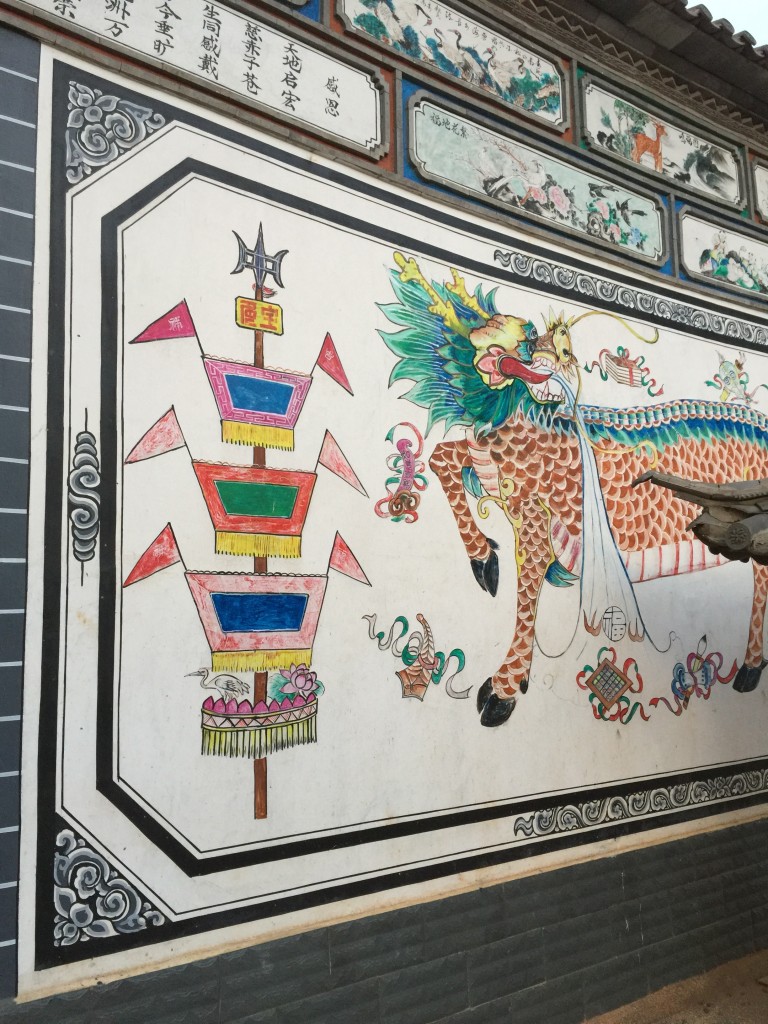
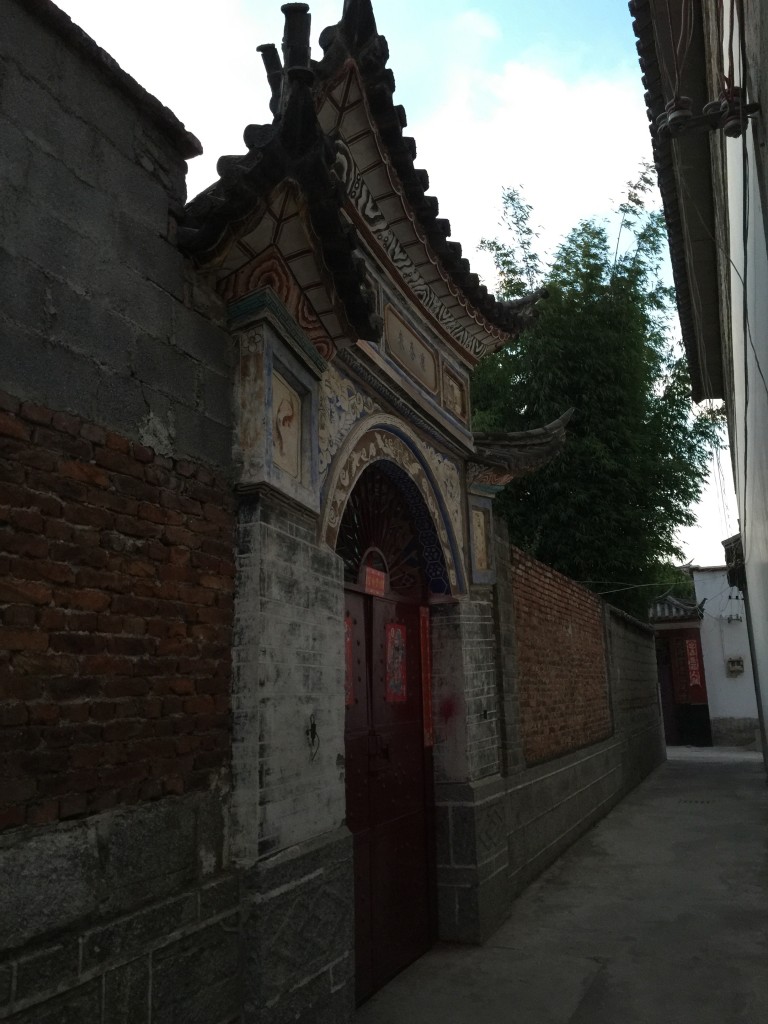
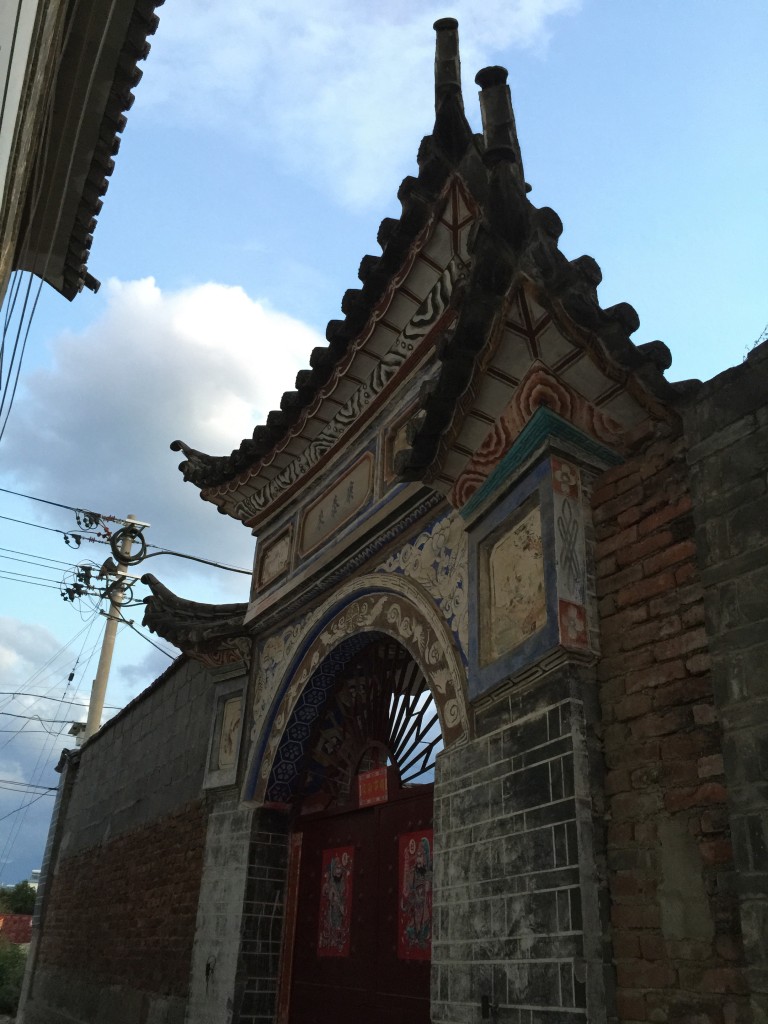
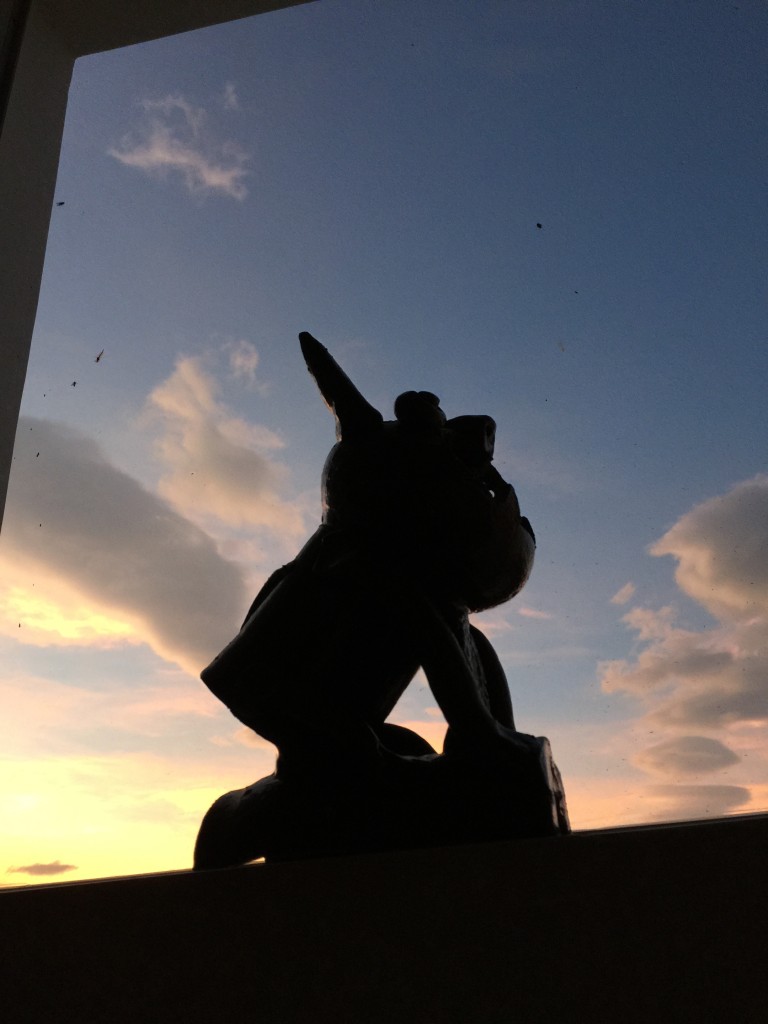
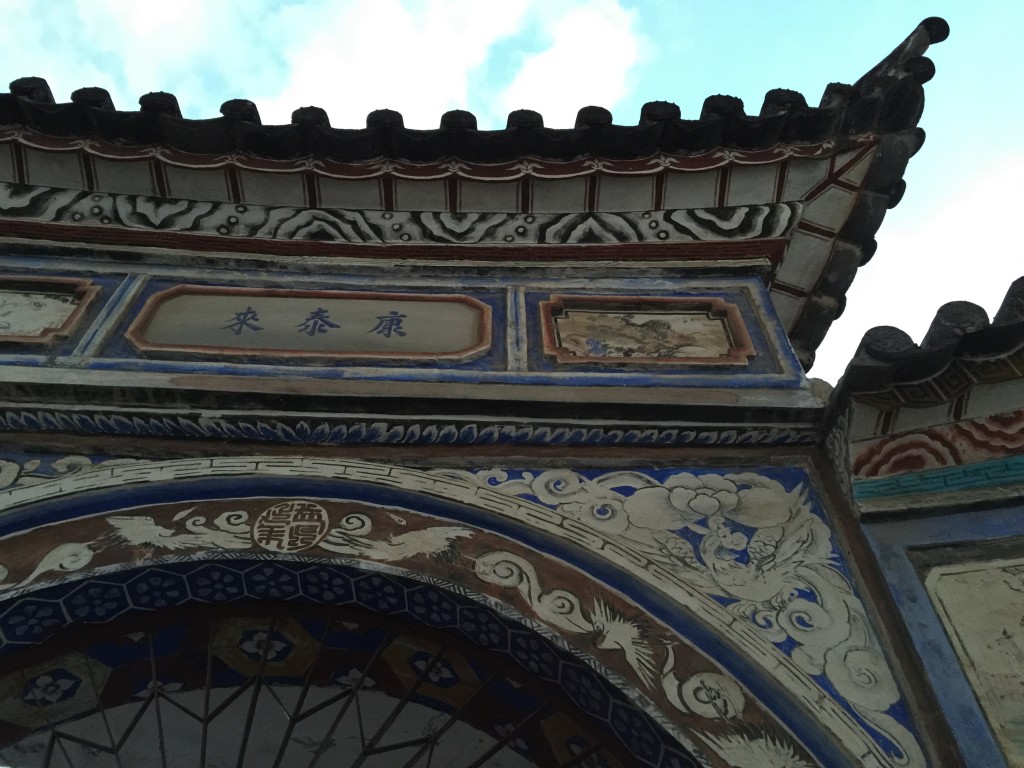
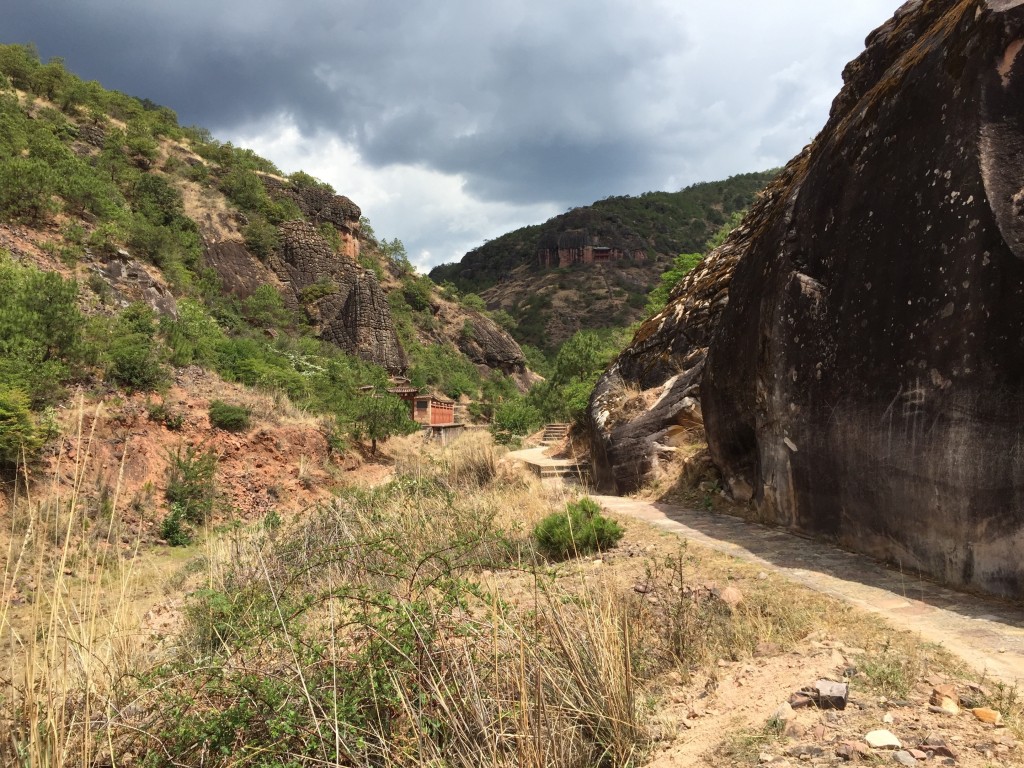
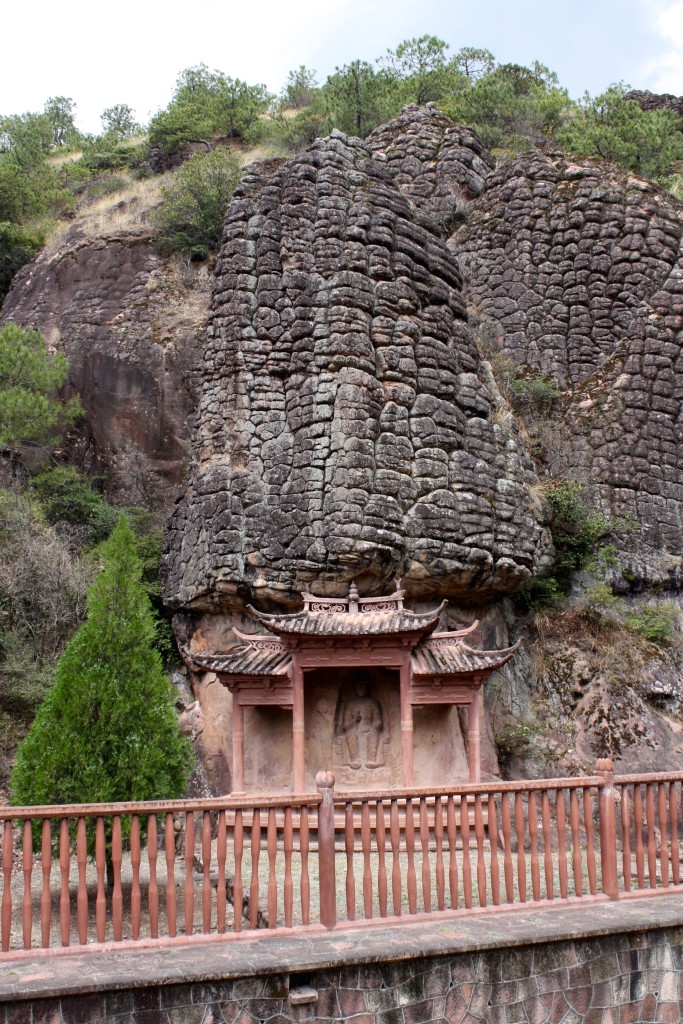
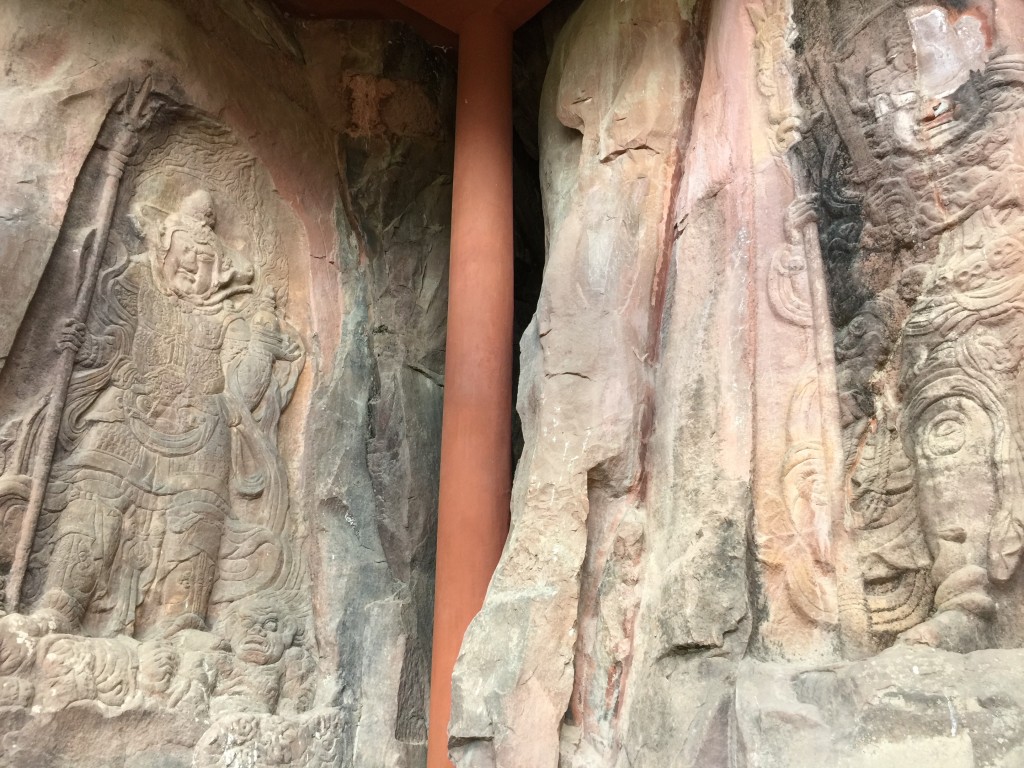
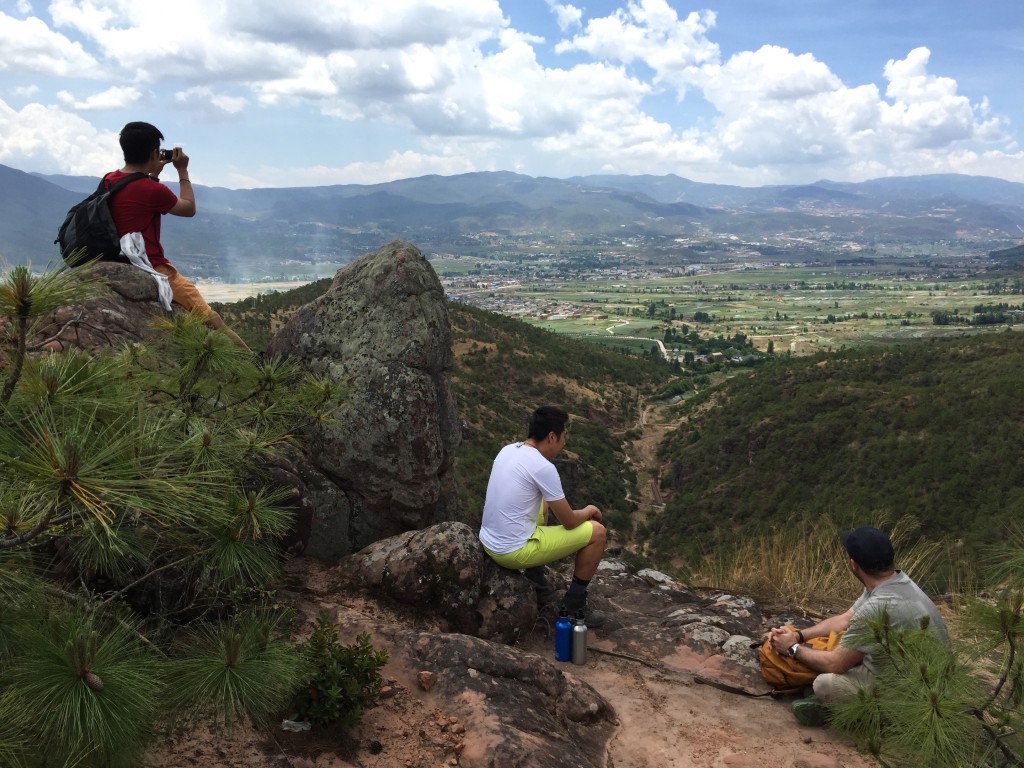
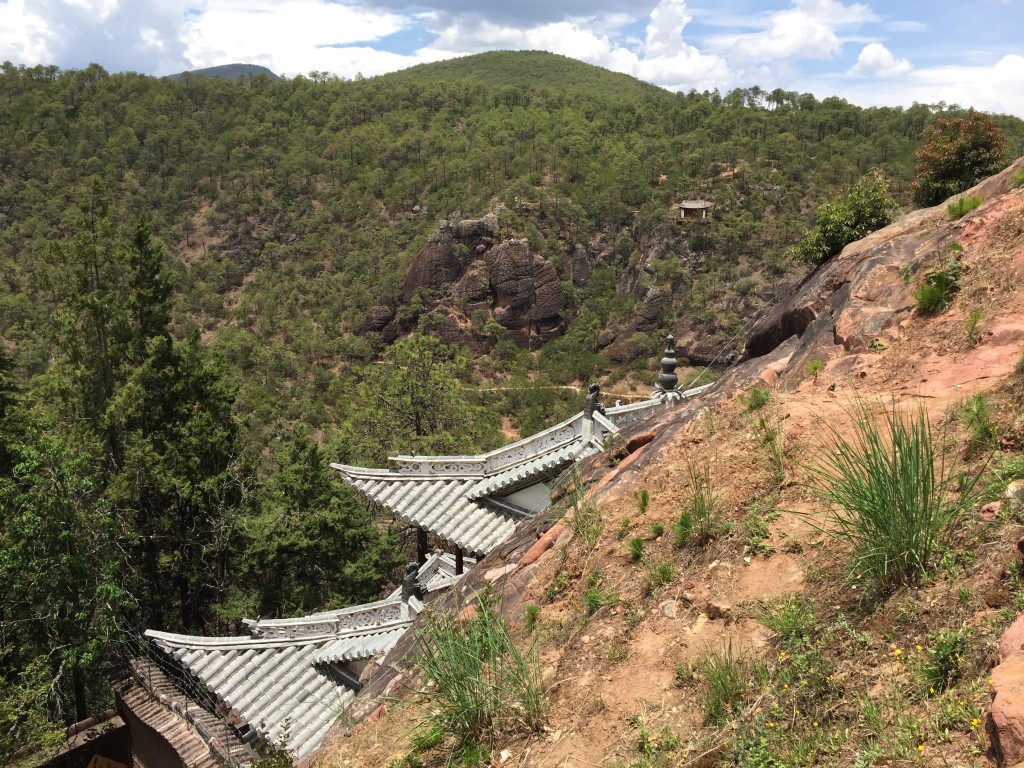
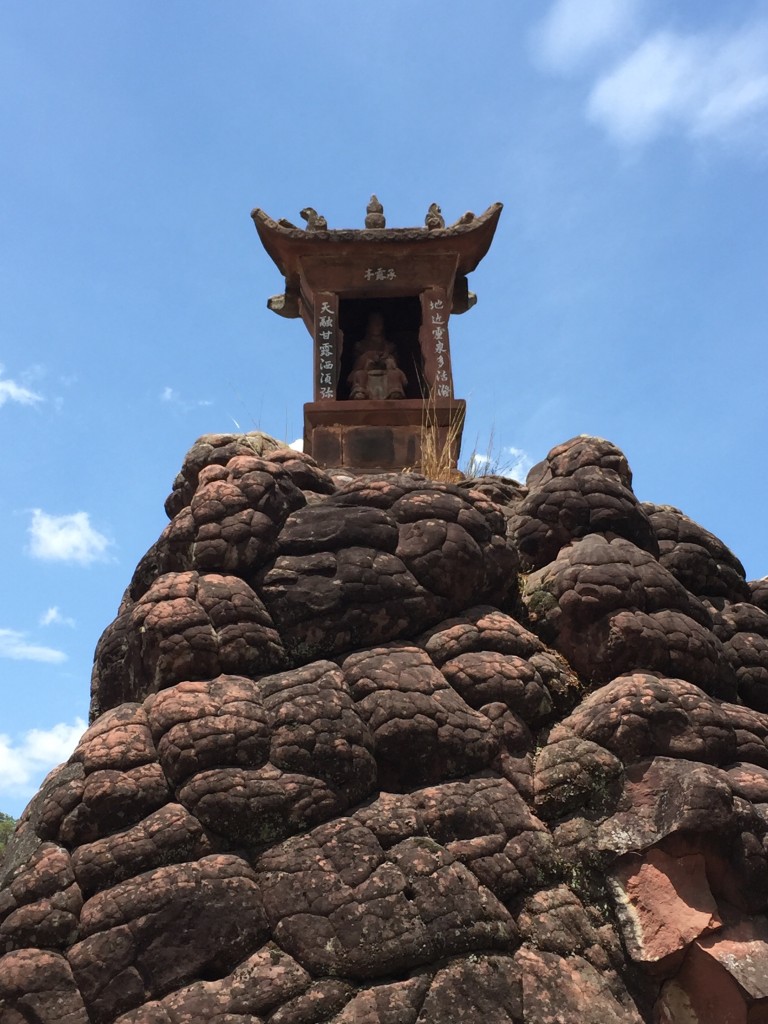
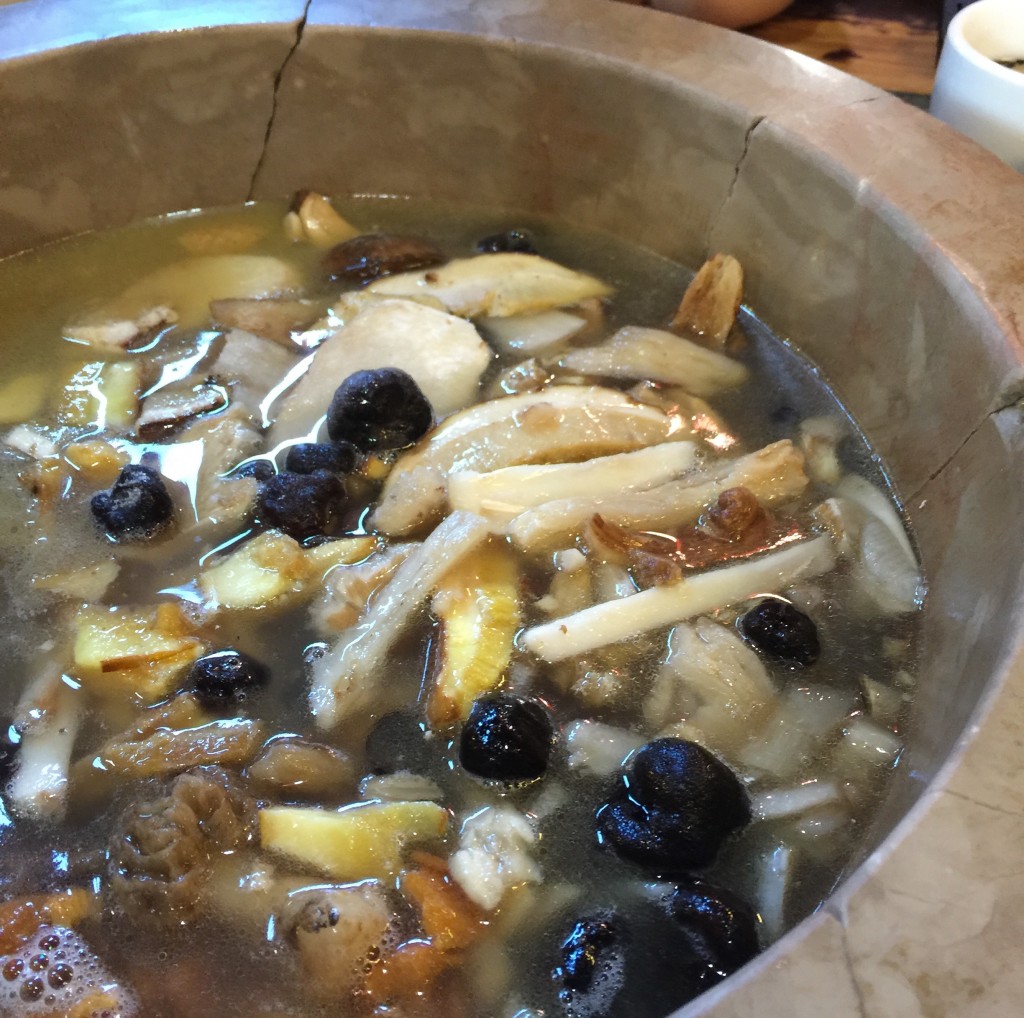
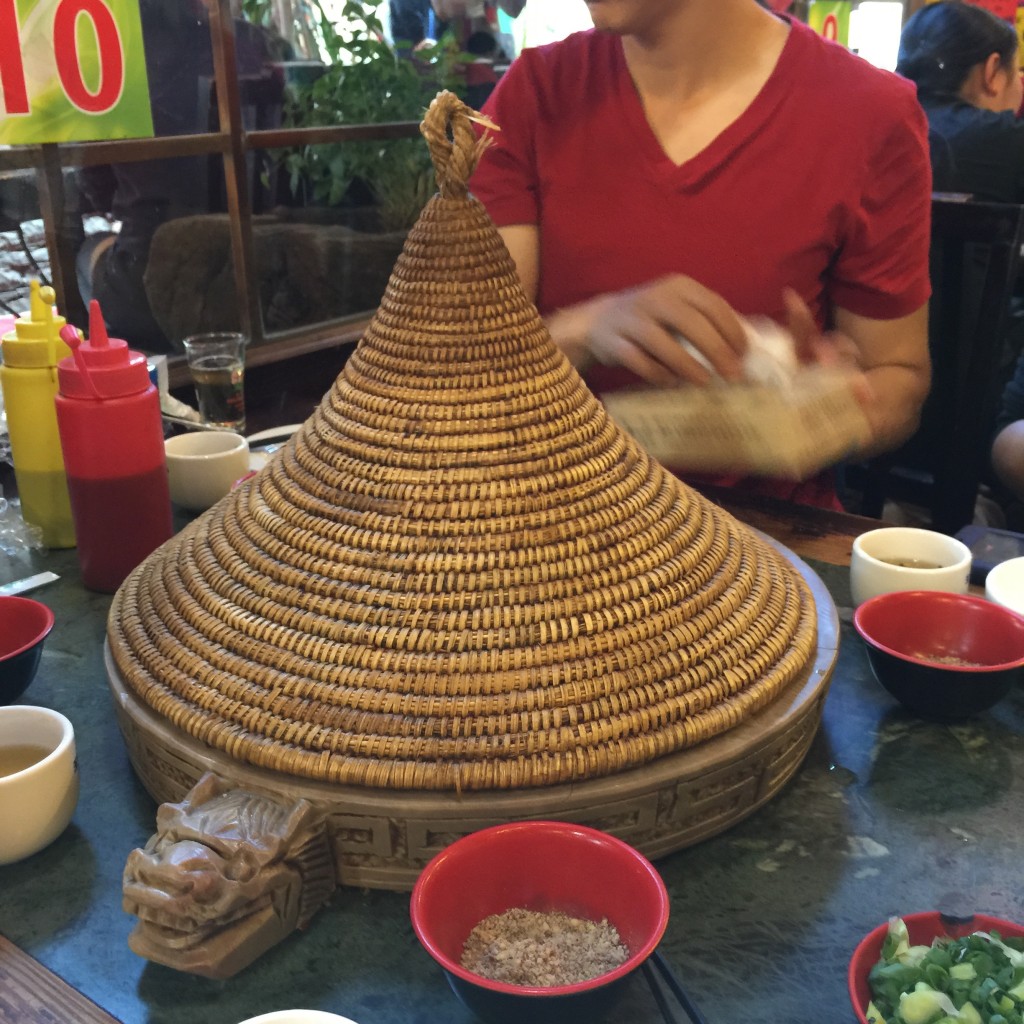
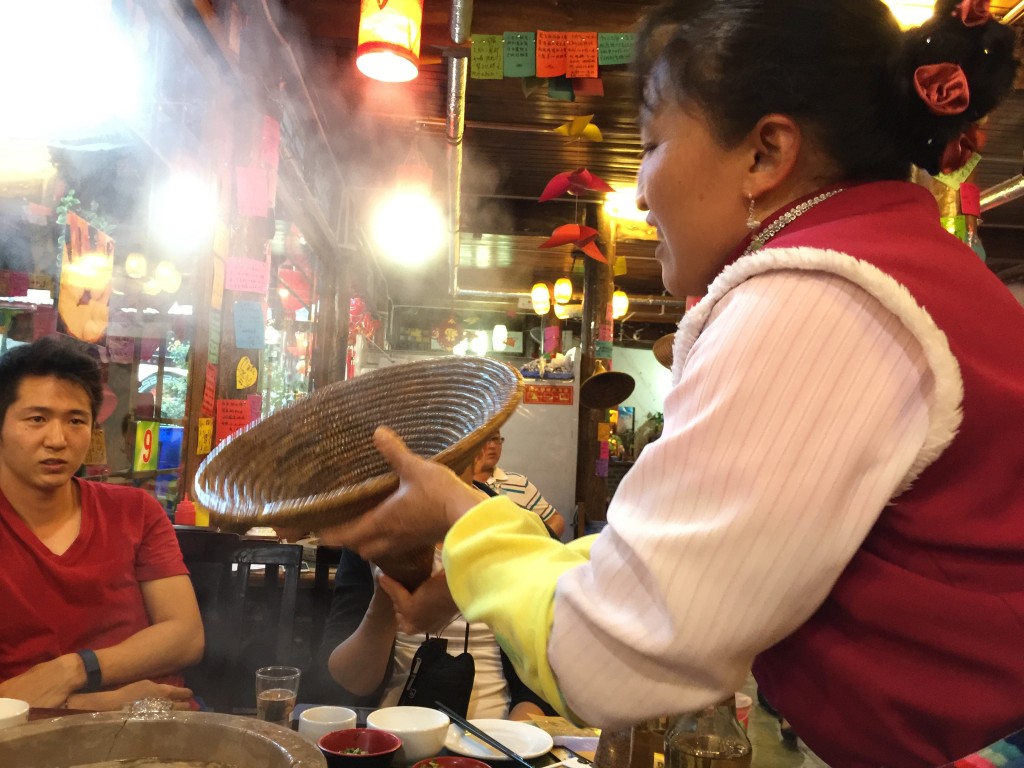
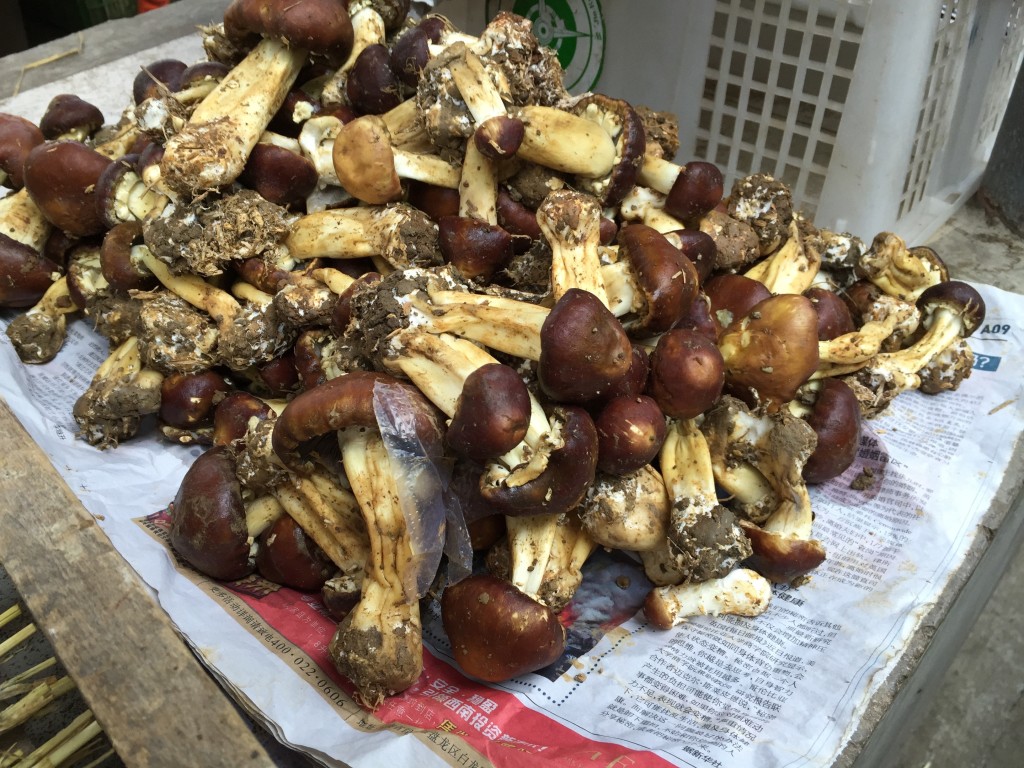
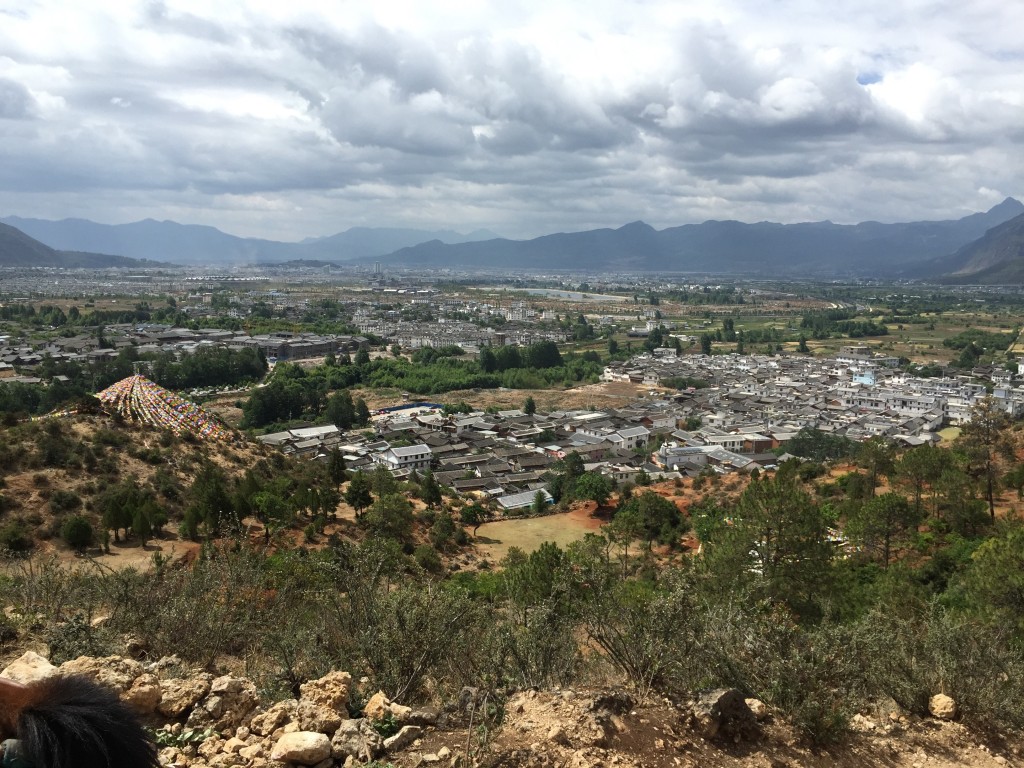
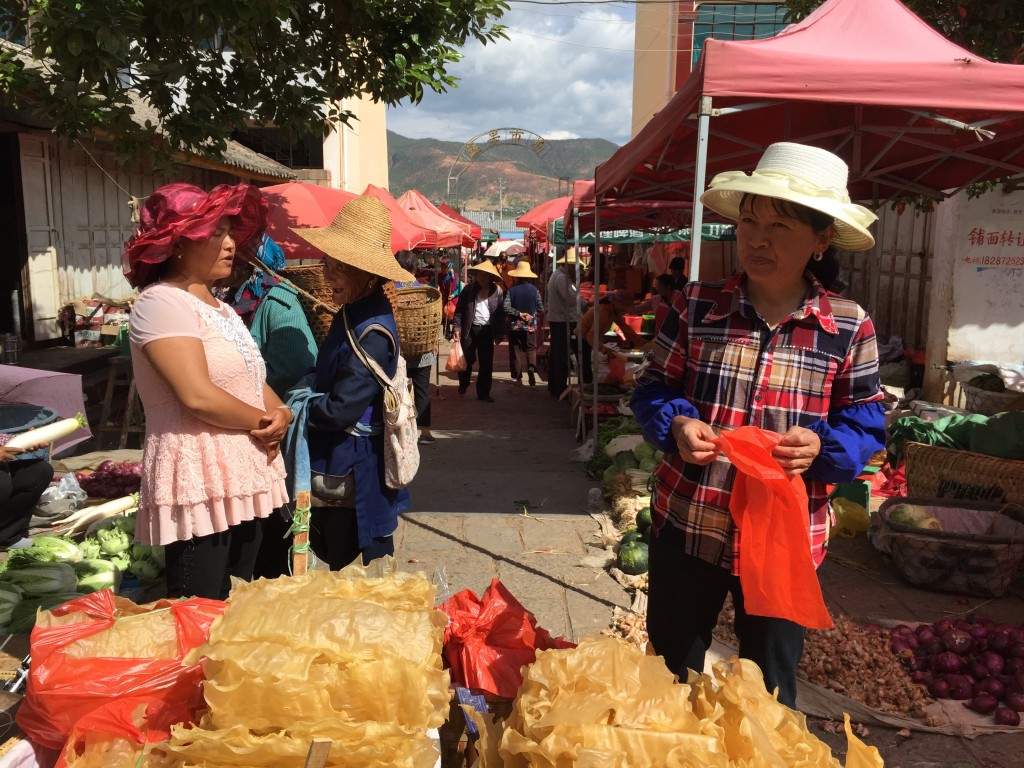
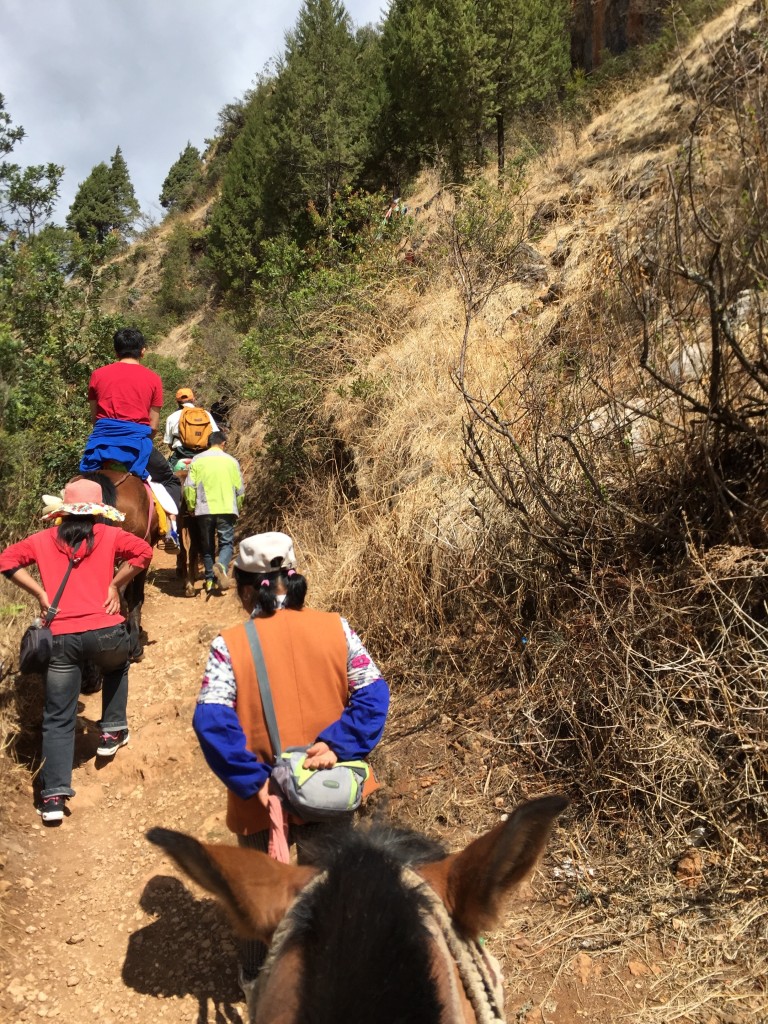
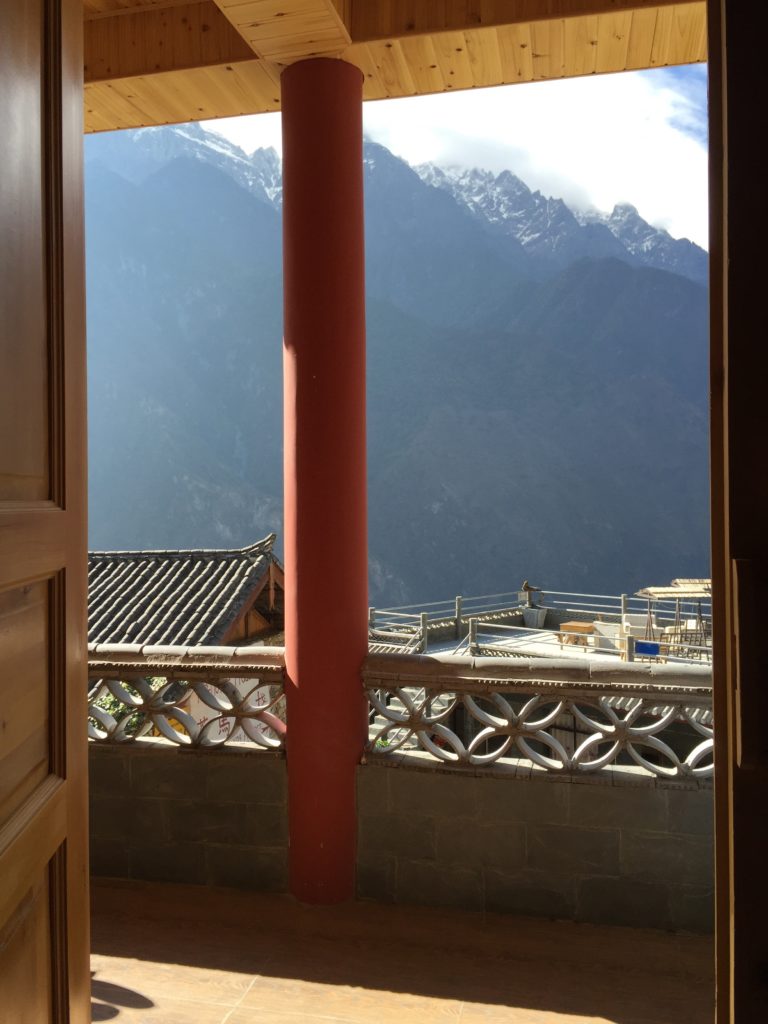
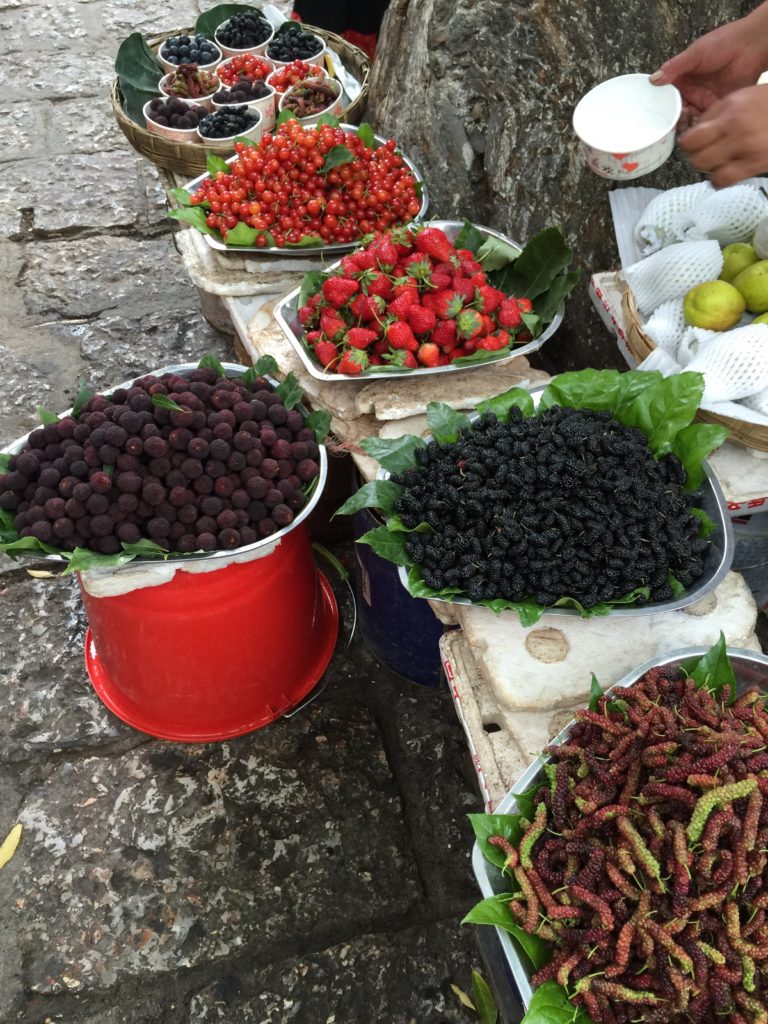
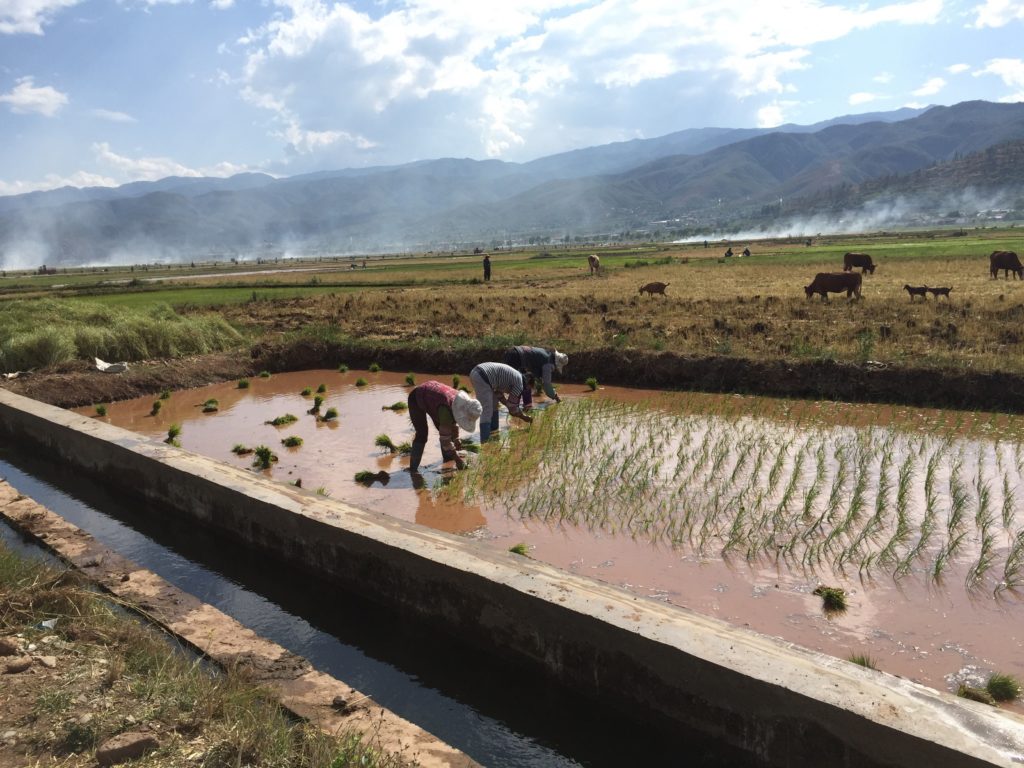
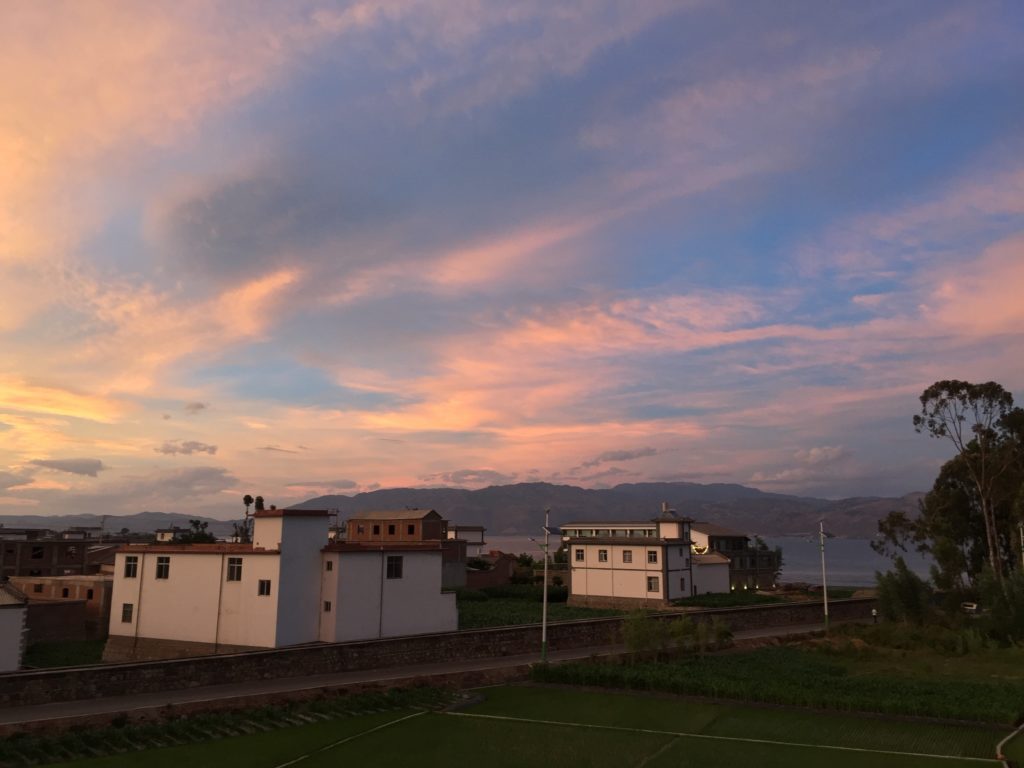
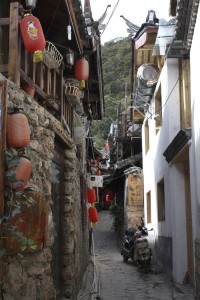 The village is small, but it’s easy to get lost in the maze of shops and stone streets. Every fourth shop is leather goods, every seventh shop carries drums and ukuleles. There is puer tea and local clothing, scarves, purses, shoes, dried yak meat, and silver jewelry. And in between the tiny shops there are cafes, restaurants and bars, and small grills offering skewers of tasty meats. Naxi women sell produce on the street. While clearly the focus of today is targeted at the tourist, you can still reminisce and envision the tea and horse road market place booming with a different kind of commerce. But whether yesterday or today, the focus is on trade.
The village is small, but it’s easy to get lost in the maze of shops and stone streets. Every fourth shop is leather goods, every seventh shop carries drums and ukuleles. There is puer tea and local clothing, scarves, purses, shoes, dried yak meat, and silver jewelry. And in between the tiny shops there are cafes, restaurants and bars, and small grills offering skewers of tasty meats. Naxi women sell produce on the street. While clearly the focus of today is targeted at the tourist, you can still reminisce and envision the tea and horse road market place booming with a different kind of commerce. But whether yesterday or today, the focus is on trade.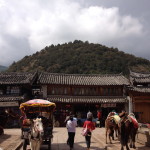

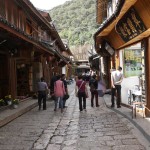
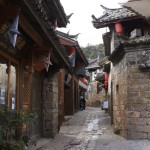
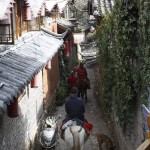

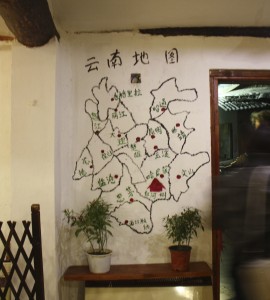 Map of Yunnan province
Map of Yunnan province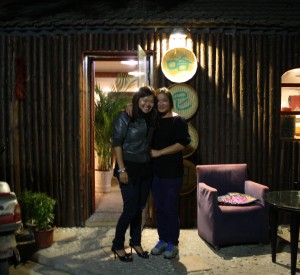 Sue Zhou and Wen Juan in front of their restaurant
Sue Zhou and Wen Juan in front of their restaurant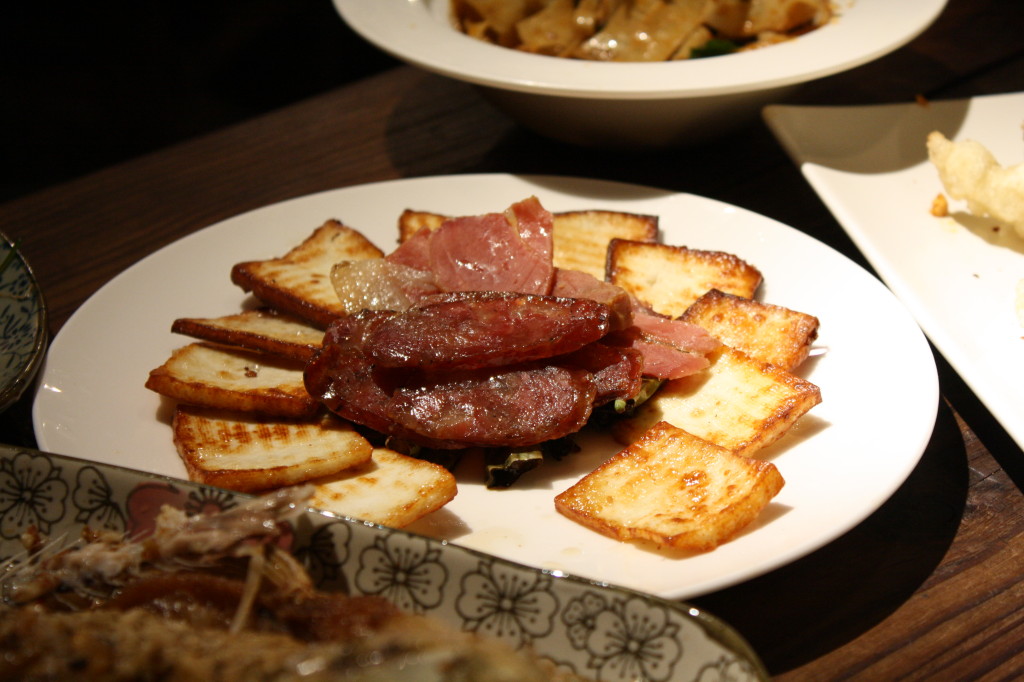 Yunnan ham and peppers accompanied by lightly pan-fried goat cheese
Yunnan ham and peppers accompanied by lightly pan-fried goat cheese